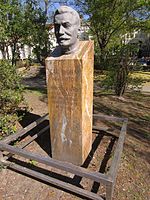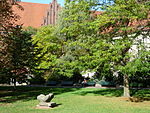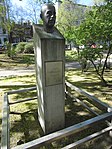Berlin International University of Applied Sciences
Berlin International University of Applied Sciences (formerly known and BAU IB or BAU International Berlin – University of Applied Sciences) is a private, non-profit institution of higher education in Berlin, Germany. It was founded in 2014 as a Fachhochschule in its own right by the state of Berlin. It is registered as the 31st private university in Berlin under German law.Berlin International is organized into five separate academic units – two faculties, preparatory school, research institute, and a library – with the campus being located in Charlottenburg. It represents an intercultural educational environment that provides students with the tools to develop their intellectual growth, experiences and creativity. There are currently 535 students from 92 different countries in the world enrolled at Berlin International.
Excerpt from the Wikipedia article Berlin International University of Applied Sciences (License: CC BY-SA 3.0, Authors).Berlin International University of Applied Sciences
Annenstraße, Berlin Mitte
Geographical coordinates (GPS) Address Nearby Places Show on map
Geographical coordinates (GPS)
| Latitude | Longitude |
|---|---|
| N 52.507576 ° | E 13.414194 ° |
Address
Bürohaus Annenhöfe
Annenstraße
10179 Berlin, Mitte
Germany
Open on Google Maps











